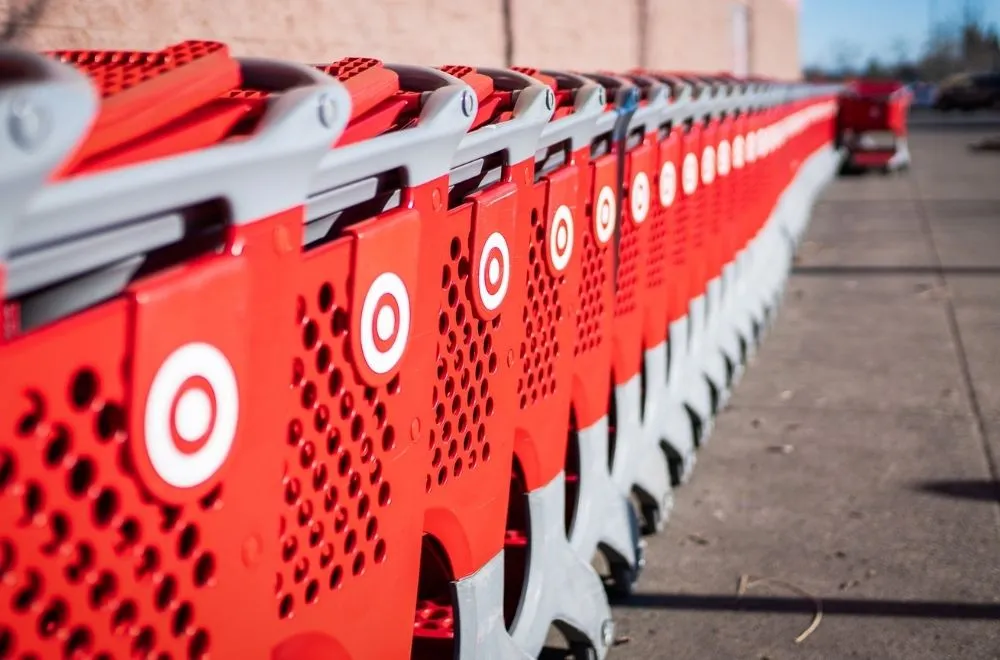With so many new consumers adopting online shopping, several eCommerce marketplaces saw incredible growth in 2020. Target, in particular, went from a rising marketplace worth testing to a vital part of an eCommerce advertising strategy.
In the first half of 2020, Target.com saw 10 million new digital guests. Target made pivotal moves into omnichannel transformation and digital commerce leadership to help guide its growth and present new opportunities to advertisers.
Pacvue Chief Operating Officer Mindy Fashaw recently co-hosted a Firstmovr eCommerce Growth Summit presentation with Criteo’s Rob Scarpelli on “Leveraging Paid Media to Capture Target’s Online Growth.” In this detailed discussion, we covered how to master eCommerce growth with Target and presented the latest strategies and insights for success.
Target Sponsored Product Ads
To enhance the online shopping experience and provide new avenues for brands to reach their customers, Target has expanded advertising options across its media ecosystem Roundel. In particular, Target Product Ads, similar to sponsored products on other eCommerce marketplaces, are biddable ad units that are easy to launch and display on Target.com and the Target app throughout the shopping experience.
Target Product Ads can be placed on:
- Product Detail Pages
- Category/Browse Pages
- Search Pages
- Dynamic Landing Pages
- Product Listing Pages
- Product Recommendations
- Aisle Pages
Search pages are providing one of the best places to reach consumers, as 40% of Target visitors use the search functionality. In fact, Target consumers are 2 times more likely to convert when they interact with search. Pacvue’s early insights have shown both click-through rate (CTR) and return on ad spend (ROAS) are highest on Search placements, compared to Browse and Product Detail Page placements.
The Target app should also be a major focus for advertisers. With consumers looking for a more digital experience, the app saw a 450% growth in impressions and a 680% growth in clicks last year. Ads can currently be placed on search pages and dynamic landing pages on the Target app, with more ad options currently in development.
eCommerce Advertisers Seeing Success on Target
Pacvue for Criteo, the new solution from Pacvue enabling programmatic advertising across a variety of marketplaces including Target, is still relatively new, launched in December 2020. However, advertisers are seeing early success with Target Product Ads.
- A baby product manufacturer ran a 3-month program and saw over 1.5 million impressions with a 13% CTR
- A CPG snack food brand with a 3-month campaign saw over 14 million impressions with a sustained ROAS over 1,300%
- An audio brand achieved 4X their ROAS goals, with a ROAS of greater than 700% over a six-month period
- A toy brand increased their investment across multiple SKU sets and exceeded 300,000 Ad Clicks for a 800% ROAS
Target also saw a significant increase in the Q4 2020 holiday season. Sales growth was strongest for the Electronics category, with mid-20% sales increase, and the Home category seeing an increase in the low-20% range.
These insights highlight the advantage of being an early adopter in this rising digital marketplace. While Target saw massive growth in 2020, there is still an opportunity for first movers to gain a competitive advantage, capture digital market share for a lower investment, and improve organic relevance.
We expect to collect even more robust insights in the future to help advertisers plan their Target strategies.
Launching & Optimizing a Target Advertising Campaign
How does a Target advertising campaign differ from advertising on Amazon or Walmart? What are the best practices for launching and optimizing a Target ad campaign? Here are the key considerations:
- Select Products: Group your campaigns by similar sub-category and price.
- Product Ads Placements: With a number of different placement options, choose the ones that best fit your goals and continue to test and optimize these based on CPC and ROAS KPIs.
- Set Bids and Daily Budget: Target uses a CPC pricing model for Sponsored Product Ads and keyword bidding is a first-price auction. Bid scaling is key to incrementally increasing bids and not wasting budget.
- Adjust Bids and Budget: As you test and optimize, adjust your bids and budget at the product-level based on your goals. Share of Voice is a good metric to see where you’re already ranking high, in both organic and paid searches, to increase or decrease bids as necessary.
Pacvue’s detailed reporting and Share of Voice monitoring allow you to keep an eye on these vital metrics. Programmatic campaign management, automation tools, daypart bidding, and budget management help adjust your bids and placement strategy in real-time to fully optimize your Target ad performance.
Target.com and the Target app is a growing digital marketplace with massive potential for expanding your market and increasing sales. Follow these best practices to get the most of this opportunity.
Download our guide for even more insights into leveraging paid media to capitalize on Target’s online growth.













